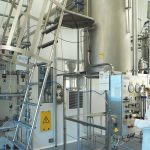Lisbon air traffic capacity 50 million pax with new airport
The Lisbon region will more than double its air traffic capacity to 50 million passengers a year once the new secondary airport at Montijo is operational.
Last week an agreement was finally signed for the new airport to advance on a military airforce base at Montijo on the South bank of the River Tagus.
The agreement was signed between the Portuguese Government and the airports authority ANA – Aeroportos de Portugal in the presence of the Portuguese Prime Minister António Costa.
Over the next few years the existing airport facility of Humberto Delgado International Airport – more popularly known as Portela, will be expanded to the North with the number of landings and take-offs climbing from 38 per hour to 72 per hour.
The Montijo Airport, which will serve Lisbon, the Setúbal Peninsula and the centre and south of the country, is slated to open in 2022.
The Prime Minister said on Friday that there would be no ‘Plan B’ for building a new complementary airport for Lisbon if the environmental impact study is rejected by environmental bodies.
António Costa made clear in the Portuguese parliament that if the impact study was rejected the country would face: “a huge problem” building a new international airport from scratch which would take 10-15 years.”
Pedro Marques, the Ministry for Planning and Infrastructure said that the current airport in Lisbon “does not currently have the capacity to accommodate the growth in demand.”
“We have carried out all the necessary studies and have concluded that the construction of the additional airport at Montijo and the expansion of Humberto Delgado is the solution that meets the growth in demand in the most rapid form possible.”
The new airport at Montijo and expansion of the existing facility at Portela foresee a total investment of just over €1.7Bn.
Work is expected to begin later this year once the Portuguese Environmental Agency environmental impact study has been accepted.
The current facility will retain its function as a hub with various investments that will improve the passenger facilities, increase aircraft parking and taxiing facilities and the creation of a new system of air space management that will enable the current 40 movements per hour to be upped to 44 in the short term.
The discussions on a new purpose-built international airport for the Lisbon region go back to 1969 when studies began to be commissioned. Since then, dozens of studies have been done costing millions with Ota, Rio Frio and Alcochete all mooted as possible sites for a new airport.
One of the main reasons why a brand new purpose-built airport for Lisbon is not now being seriously considered is cost. With today’s technology and aircraft it is estimated that an international commercial airport would cost several billion euros, money which the Portuguese government, having recently emerged from a serious economic crisis involving a €78Bn IMF bailout, simply does not have. By way of example, the cost of Heathrow’s Terminal 5 alone set the British government back nearly £6Bn.










